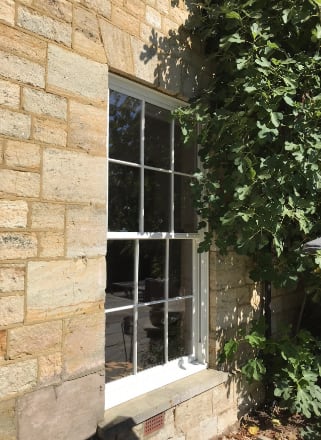In today’s fast-paced digital age, smart home technology has become increasingly prevalent, transforming the way we live and interact with our homes.
From intelligent thermostats to voice-controlled assistants, our homes are getting smarter every day. One area where this technology is making significant strides is in the realm of windows and doors. Smart home integration is revolutionising the functionality, convenience, and security of our living spaces.
In this blog post, we explore the developments in smart windows and doors and delve into how they are shaping the future of our homes. However please keep in mind, as exciting as these new technologies are, they take time and vigorous testing before they’re available to the general public. Until then, we\’ll be keeping our finger on the pulse with the development of smart glass, windows and doors.
The Concept of Smart Home Integration
Smart home integration refers to the seamless connection and interaction between various devices and systems within a home to enhance automation, control, and efficiency.
As so many of us are happily aware, it’s now possible to connect and control different aspects of our homes using smartphones, tablets, or voice commands.
While smart lighting, security systems, and appliances have gained popularity, the integration of windows and doors into this ecosystem is unlocking a new level of convenience and functionality.
Smart Windows: Bringing Intelligence to Glazing
Smart windows, also known as switchable windows or dynamic glazing, are a groundbreaking innovation that can transform the transparency, thermal properties, and privacy of glass with the touch of a button or through automated sensors.
Of course, this isn’t a brand new technology. We’ve been seeing the likes of James Bond parade this kind of glazing on our screens for years. But, as technology goes, the features and performance of this glass, and therefore windows, are advancing all the time.
These windows incorporate advanced technologies such as electrochromic, thermochromic, or suspended particle devices (SPD) to control the amount of light and heat passing through them.
Through integration with smart home systems, occupants can adjust the tint or transparency of the windows, reducing glare, blocking harmful UV rays, and optimising energy efficiency. Imagine waking up in the morning, and as your smart home detects the first rays of sunlight, your windows automatically adjust to allow a gentle, natural light to enter your space. Now we’re talking!
Intelligent Doors: Enhancing Access and Security
Smart doors are another exciting development in the realm of smart home integration.
These doors incorporate advanced locking mechanisms, biometric sensors, and real-time connectivity to improve security and provide convenient access control.
With the integration of smart door locks, homeowners can lock and unlock their doors remotely using their smartphones or voice commands. Additionally, features like facial recognition or fingerprint authentication can add an extra layer of security to prevent unauthorised access.
Integration with surveillance systems allows homeowners to monitor their entryways from anywhere, enhancing peace of mind. Furthermore, smart doors can be programmed to send notifications or alerts whenever someone enters or exits the premises, ensuring you always stay informed about the security of your home.
We’re mostly seeing the integration of smart doors with add-ons such as Yale smart locks and Ring doorbells, but we don’t think it’ll be too long before this kind of technologically advanced hardware is part of our standard door orders.

Energy Efficiency and Sustainability
One of the key benefits of smart home integration in windows and doors is the significant boost to energy efficiency and sustainability.
Smart windows can intelligently adjust their tint based on external conditions such as sunlight intensity or temperature, effectively reducing the need for artificial heating or cooling. By optimising natural lighting and minimising heat gain or loss, smart windows contribute to reduced energy consumption and lower utility bills.
Moreover, integrating these windows with weather forecasting systems or sensors can allow for proactive adjustments, ensuring optimal thermal comfort within the home.
Are you blown away yet? Because we certainly are.
Seamless Integration and Control
A crucial aspect of smart home integration is the ability to control and manage different devices and systems from a centralised platform. This convenience allows you to monitor, customise, and automate your windows and doors alongside other smart devices.
Smart home hubs or mobile applications provide a user-friendly interface to control window transparency, temperature settings, security features, and more. For instance, you can program your smart windows to automatically close when it starts raining or link your smart doors to the motion sensors to welcome guests with an automated entry sequence. The possibilities for customisation and personalisation are endless.
Smart doors and windows are redefining the way we experience our homes. The integration of smart home technology into these essential elements brings a myriad of benefits, ranging from enhanced security and convenience to improved energy efficiency and sustainability.
What do you think? Are you chomping at the bit to make your home smarter, or does this feel like a step too far for you?

